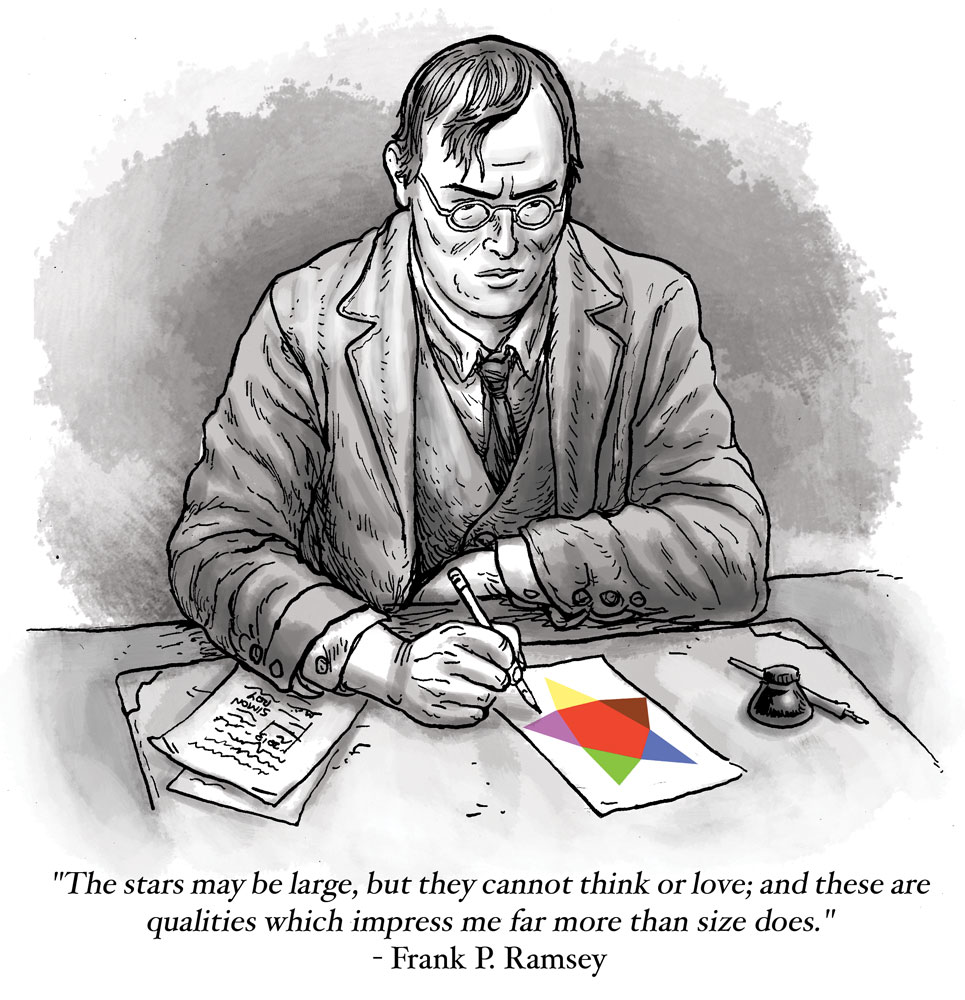Section 14.1 Introduction
Welcome to a compilation showcasing notable proofs in Ramsey theory, selected by esteemed professors in the field. In curating this collection, we engaged a diverse group of experts through email, inviting them to share their personal picks for standout demonstrations within Ramsey theory. The professors who responded were Steve Butler, Jay Cummings, David Conlon, Jacob Fox, William Ian Gasarch, David Gunderson, Dan Kral, Imre Leader, Luis Pedro Montejano Cantoral, Dhruv Mubayi, and Joel Spencer.
Originating from the contributions of British mathematician Frank P. Ramsey, this mathematical branch delves into the emergence of order amidst seemingly chaotic structures.
Each proof featured in this compilation has been meticulously chosen by the respective professors, offering distinct perspectives on the elegance and profundity inherent in Ramsey theory. Through their selections, these scholars illuminate the intricate interplay between structure and randomness, highlighting the enduring allure of this captivating yet often overlooked realm of mathematics.
